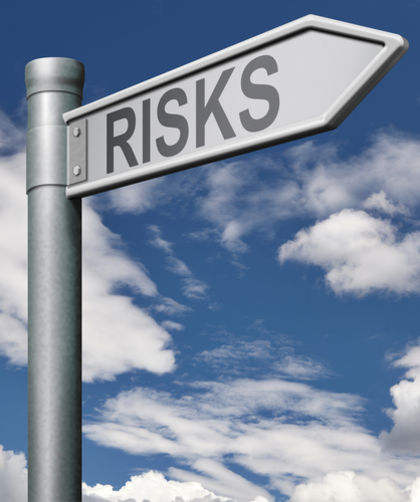 Employers that invest in workplace safety and health can expect to reduce fatalities, injuries, and illnesses. This will result in cost savings in a variety of areas, such as lowering workers’ compensation costs and medical expenses, avoiding OSHA penalties, and reducing costs to train replacement employees and conduct accident investigations. In addition, employers often find that changes made to improve workplace safety and health can result in significant improvements to their organization’s productivity and financial performance.
Employers that invest in workplace safety and health can expect to reduce fatalities, injuries, and illnesses. This will result in cost savings in a variety of areas, such as lowering workers’ compensation costs and medical expenses, avoiding OSHA penalties, and reducing costs to train replacement employees and conduct accident investigations. In addition, employers often find that changes made to improve workplace safety and health can result in significant improvements to their organization’s productivity and financial performance.
Category: Work Comp
Safety and Health Add Value
 Addressing safety and health issues in the workplace saves the employer money and adds value to the business. Recent estimates place the business costs associated with occupational injuries at close to $170 billion – expenditures that come straight out of company profits.
Addressing safety and health issues in the workplace saves the employer money and adds value to the business. Recent estimates place the business costs associated with occupational injuries at close to $170 billion – expenditures that come straight out of company profits.
When workers stay whole and healthy, the direct cost-savings to businesses include:
- lower workers’ compensation insurance costs;
- reduced medical expenditures;
- smaller expenditures for return-to-work programs;
- fewer faulty products;
- lower costs for job accommodations for injured workers;
- less money spent for overtime benefits.
Safety and health also make big reductions in indirect costs, due to:
- increased productivity;
- higher quality products;
- increased morale;
- better labor/management relations;
- reduced turnover;
- better use of human resources.
Employees and their families benefit from safety and health because:
- their incomes are protected;
- their family lives are not hampered by injury;
- they have less stress.
Simply put, protecting people on the job is in everyone’s best interest – our economy, our communities, our fellow workers and our families. Safety and health add value to businesses, workplaces and lives.
Benefits of Risk Management
 Risk management provides a clear and structured approach to identifying risks. Having a clear understanding of all risks allows an organization to measure and prioritize them and take the appropriate actions to reduce losses. Risk management has other benefits for an organization, including:
Risk management provides a clear and structured approach to identifying risks. Having a clear understanding of all risks allows an organization to measure and prioritize them and take the appropriate actions to reduce losses. Risk management has other benefits for an organization, including:
- Saving resources: Time, assets, income, property and people are all valuable resources that can be saved if fewer claims occur.
- Protecting the reputation and public image of the organization.
- Preventing or reducing legal liability and increasing the stability of operations.
- Protecting people from harm.
- Protecting the environment.
- Enhancing the ability to prepare for various circumstances.
- Reducing liabilities.
- Assisting in clearly defining insurance needs.
An effective risk management practice does not eliminate risks. However, having an effective and operational risk management practice shows an insurer that your organization is committed to loss reduction or prevention. It makes your organization a better risk to insure.
The Dangers of Arc Flash Incidents
 The flash is instantaneous, almost too fast for the eye to comprehend. But the end result of this incident could be more than $15 million in direct and indirect costs to a company.
The flash is instantaneous, almost too fast for the eye to comprehend. But the end result of this incident could be more than $15 million in direct and indirect costs to a company.
What is arc flash?
An arc flash is a short circuit through the air. When insulation or isolation between electrified conductors is breached or can no longer withstand the applied voltage, an arc flash occurs. As employees work on or near energized conductors or circuits, movement near or contact with the equipment, or a failure of the equipment, may cause a phase-to-ground and/or a phase-to-phase fault.
The temperature of an arc can reach more than 5000 F as it creates a brilliant flash of light and a loud noise. An enormous amount of concentrated radiant energy explodes outward from the electrical equipment, spreading hot gases, melting metal, causing death or severe radiation burns, and creating pressure waves that can damage hearing or brain function and a flash that can damage eyesight. The fast-moving pressure wave also can send loose material such as pieces of equipment, metal tools, and other objects flying, injuring anyone standing nearby.
via The Dangers of Arc Flash Incidents – MAINTENANCE TECHNOLOGY.
Insurance is NOT Risk Management
 Risk management includes the following five processes:
Risk management includes the following five processes:
- Identification: The process of identifying exposures (whether financial, social, physical, juridical, political, or otherwise) that face the organization.
- Analysis: Determine how these exposures impact or could impact the organization.
- Control: Determine how to control these exposures by eliminating them or reducing their effect.
- Finance: The step where it is determined how will these exposures be dealt with as they arrive? Through insurance premiums paid in advance, or through internal funds, etc.
- Administration: The final step in the process is to put all the above work together into practice, and ultimately to start over.
Risk Management is a process that builds on each step. Insurance falls into Step 4 Finance…it’s critical to implement the first 3 steps to be rewarded in Step 4 with lower costs.
Bloodborne Pathogens and Needlestick Prevention
 What are bloodborne pathogens?
What are bloodborne pathogens?
Bloodborne pathogens are infectious microorganisms in human blood that can cause disease in humans. These pathogens include, but are not limited to, hepatitis B (HBV), hepatitis C (HCV) and human immunodeficiency virus (HIV). Needlesticks and other sharps-related injuries may expose workers to bloodborne pathogens. Workers in many occupations, including first aid team members, housekeeping personnel in some industries, nurses and other healthcare personnel may be at risk of exposure to bloodborne pathogens.
via Safety and Health Topics | Bloodborne Pathogens and Needlestick Prevention.
Protecting Your Eyes at Work
 Eye injuries in the workplace are very common. The National Institute for Occupational Safety and Health (NIOSH) reports about 2,000 U.S. workers sustain job-related eye injuries that require medical treatment each day. However, safety experts and eye doctors believe the right eye protection could have lessened the severity or even prevented 90% of these eye injuries.
Eye injuries in the workplace are very common. The National Institute for Occupational Safety and Health (NIOSH) reports about 2,000 U.S. workers sustain job-related eye injuries that require medical treatment each day. However, safety experts and eye doctors believe the right eye protection could have lessened the severity or even prevented 90% of these eye injuries.
via Protecting Your Eyes at Work | American Optometric Association.
Don’t Ignore the Signs of Substance Abuse
 Some of the most common signs of substance abuse are things that aren’t there -– namely, the employee and the employee’s work ethic.
Some of the most common signs of substance abuse are things that aren’t there -– namely, the employee and the employee’s work ethic.
Unexplained absences and a decline in productivity might indicate an employee has a problem with substance abuse, noted Gordon Hughes, director of the employee assistance program at the U.S. Centers for Disease Control and Prevention (CDC). “The employee is probably missing Mondays or Fridays,” Hughes said. “There’s also a change in productivity. They were a good producer, they worked well, then there’s a sudden change. It may or may not be alcohol, but something is going on, and that’s a warning sign.”
via Don’t Ignore the Signs of Substance Abuse — Occupational Health & Safety.
Strategies for an Aging Workforce
 The Bureau of Labor Statistics estimates that 25% of the workforce will be over 55 in 2020. That’s one in four workers — up from one in every five workers just two years ago. Why? In addition to Boomers, the elimination of mandatory retirement and the enactment of age discrimination laws accounts for some of this trend. Better life expectancy and health is partly responsible. And for most, early retirement is largely a thing of the past. Many workers now choose to or must remain in the workforce longer than they had originally planned.
The Bureau of Labor Statistics estimates that 25% of the workforce will be over 55 in 2020. That’s one in four workers — up from one in every five workers just two years ago. Why? In addition to Boomers, the elimination of mandatory retirement and the enactment of age discrimination laws accounts for some of this trend. Better life expectancy and health is partly responsible. And for most, early retirement is largely a thing of the past. Many workers now choose to or must remain in the workforce longer than they had originally planned.
The good news is that a well-designed workplace with positive policies and programs to optimize the health of aging workers benefits everyone. When work stations and job tasks are matched to the capacity of each worker, younger or older, everyone benefits. When workplace flexibility is maximized, when work is organized with personal health and well-being principles in mind, and when workplace policies consistently are viewed through their health effects on workers, employers and workers both win. This is also a way for employers to exercise excellent foresight to support ongoing organizational health for their companies and indeed for the U.S. economy, as well as the individual worker’s well-being. By preventing stresses or injuries that, over time, can have cumulative negative effects on a worker’s ability to work safely and productively, an employer can help assure that the U.S. continues to have a capable, experienced workforce.
Many effective workplace solutions are simple, don’t have to cost very much, and can have large benefits if implemented properly with worker input and support throughout all levels of management. Below are strategies for preparing your workplace for an older and healthier, safer workforce. Consider putting these in place today.
- Prioritize workplace flexibility. Workers prefer jobs that offer more flexibility over those that offer more vacation days. To the extent possible, give workers a say in their schedule, work conditions, work organization, work location and work tasks.
- Match tasks to abilities. Use self-paced work, self-directed rest breaks and less repetitive tasks
- Avoid prolonged, sedentary work – it’s bad for workers at every age. Consider sit/stand workstations and walking workstations for workers who traditionally sit all day. Provide onsite physical activity opportunities or connections to low-cost community options.
- Manage noise hazards (including excess background noise), slip/trip hazards, and physical hazards, conditions that can challenge an aging workforce more.
- Provide ergo-friendly work environments — workstations, tools, floor surfaces, adjustable seating, better illumination where needed, and screens and surfaces with less glare.
- Utilize teams and teamwork strategies for aging-associated problem solving. Workers closest to the problem are often best equipped to find the fix.
- Provide health promotion and lifestyle interventions including physical activity, healthy meal options, tobacco cessation assistance, risk factor reduction and screenings, coaching, and onsite medical care. Accommodate medical self-care in the workplace and time away for health visits.
- Invest in training and building worker skills and competencies at all age levels. Help older employees adapt to new technologies, often a concern for employers and older workers.
- Proactively manage reasonable accommodations and the return-to-work process after illness or injury absences.
- Require aging workforce management skills training for supervisors. Include a focus on the most effective ways to manage a multi-generational workplace.
via CDC – NIOSH Science Blog – Safer and Healthier at Any Age: Strategies for an Aging Workforce.
Save Your Back – Practice Safe Lifting
- Try not to lift more weight than you’re used to carrying. How much you can handle safely depends in part on your level of conditioning. Technique also makes a difference.
- To help avoid back injury, remember to lift with your legs. Here’s how:
- Bend your knees.
- Keep your back straight, even when you’re putting down the load.
- Hold the load close to your body and use a slow, steady lifting motion.
- Don’t twist while carrying something. Instead, turn your feet and your body in the direction you want to go.
- If you need to move something that’s too heavy for you to lift, ask someone to help you. Or, if you’re authorized to use a forklift or other device, use it to move the object.

